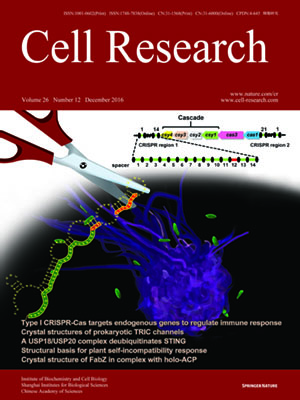
Volume 26, No 12, Dec 2016
ISSN: 1001-0602
EISSN: 1748-7838 2018
impact factor 17.848*
(Clarivate Analytics, 2019)
Volume 26 Issue 12, December 2016: 1349-1352 | Open Access
LETTERS TO THE EDITOR
NgAgo-based fabp11a gene knockdown causes eye developmental defects in zebrafish
Jialing Qi1,*, Zhangji Dong1,*, Yunwei Shi1, Xin Wang1, Yinyin Qin1, Yongming Wang2 and Dong Liu1
1Co-innovation Center of Neuroregeneration, Jiangsu Key Laboratory of Neuroregeneration, Nantong University, Nantong, Jiangsu 226001, China
2The State Key Laboratory of Genetic Engineering and MOE Key Laboratory of Contemporary Anthropology, School of Life Sciences, Fudan University, Shanghai 200433, China
Correspondence: Dong Liu, E-mail: liudongtom@gmail.com;(tom@ntu.edu.cn)
A recent report of genome editing using Natronobacterium gregoryi Argonaute (NgAgo) with guide DNA (gDNA) in human cells1 prompted us to explore the utility of this protein for in vivo genetic manipulation in zebrafish (Danio rerio). Zebrafish is a model organism that offers several distinct advantages for studying genetics, developmental biology, vascular biology and disease modeling. In the last several years, loss-of-function genomic editing techniques, including zinc-finger nucleases (ZFNs)2,3, artificial transcription activator-like effector nucleases (TALENs)4,5 and clustered regularly interspaced short palindromic repeats (CRISPR)/CRISPR-associated (Cas) 9 system (CRISPR/Cas9)6,7, have been adopted for zebrafish. Recently the gDNA/NgAgo system has elicited much interest because of some unique advantages: low tolerance to guide-target mismatch, minimum off-target effects, and easy to design1. Here we investigated whether the gDNA/NgAgo system could be used to manipulate zebrafish genes in vivo using fabp11a as a test case.
10.1038/cr.2016.134
FULL TEXT | PDF
Browse 1919


